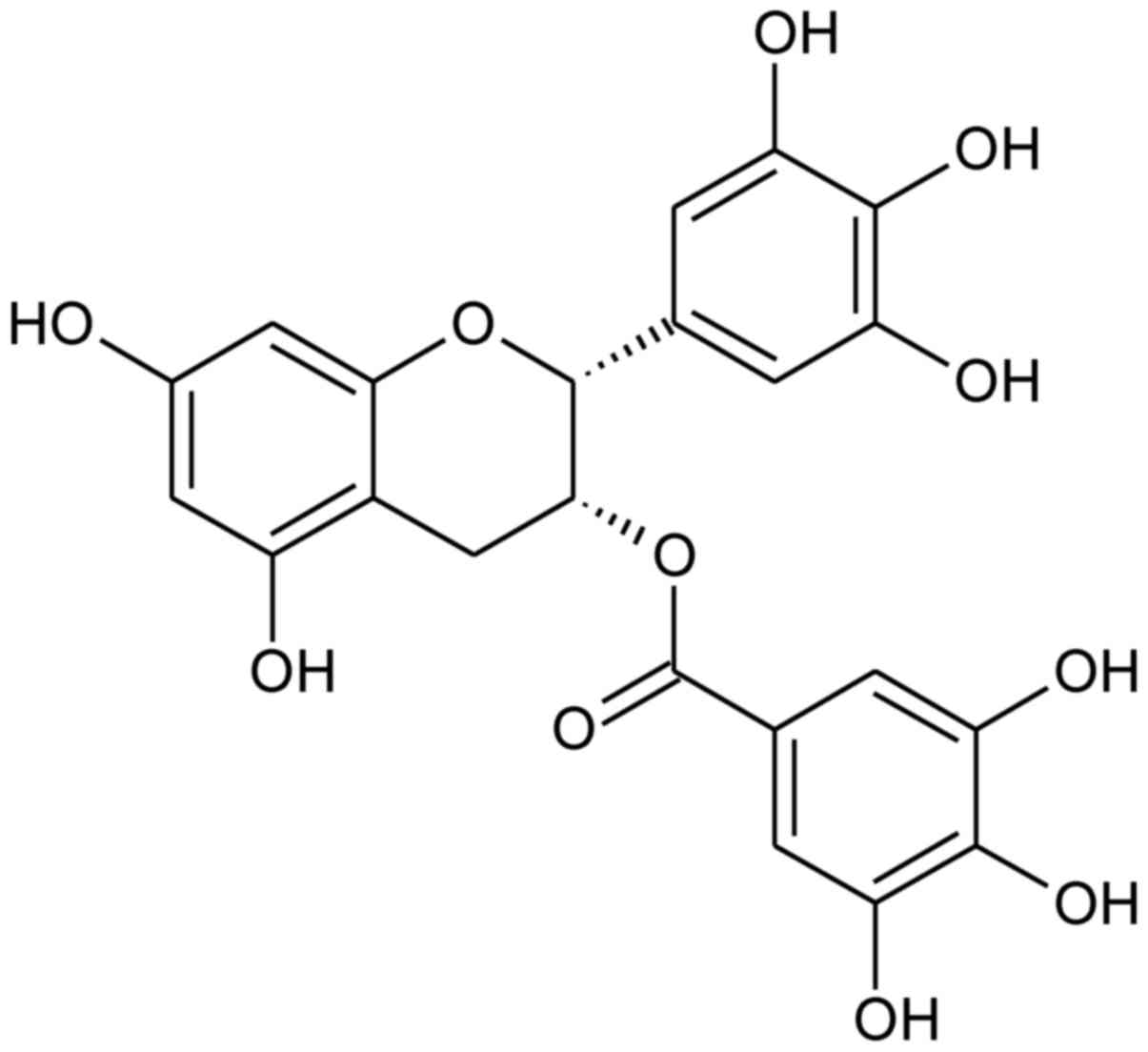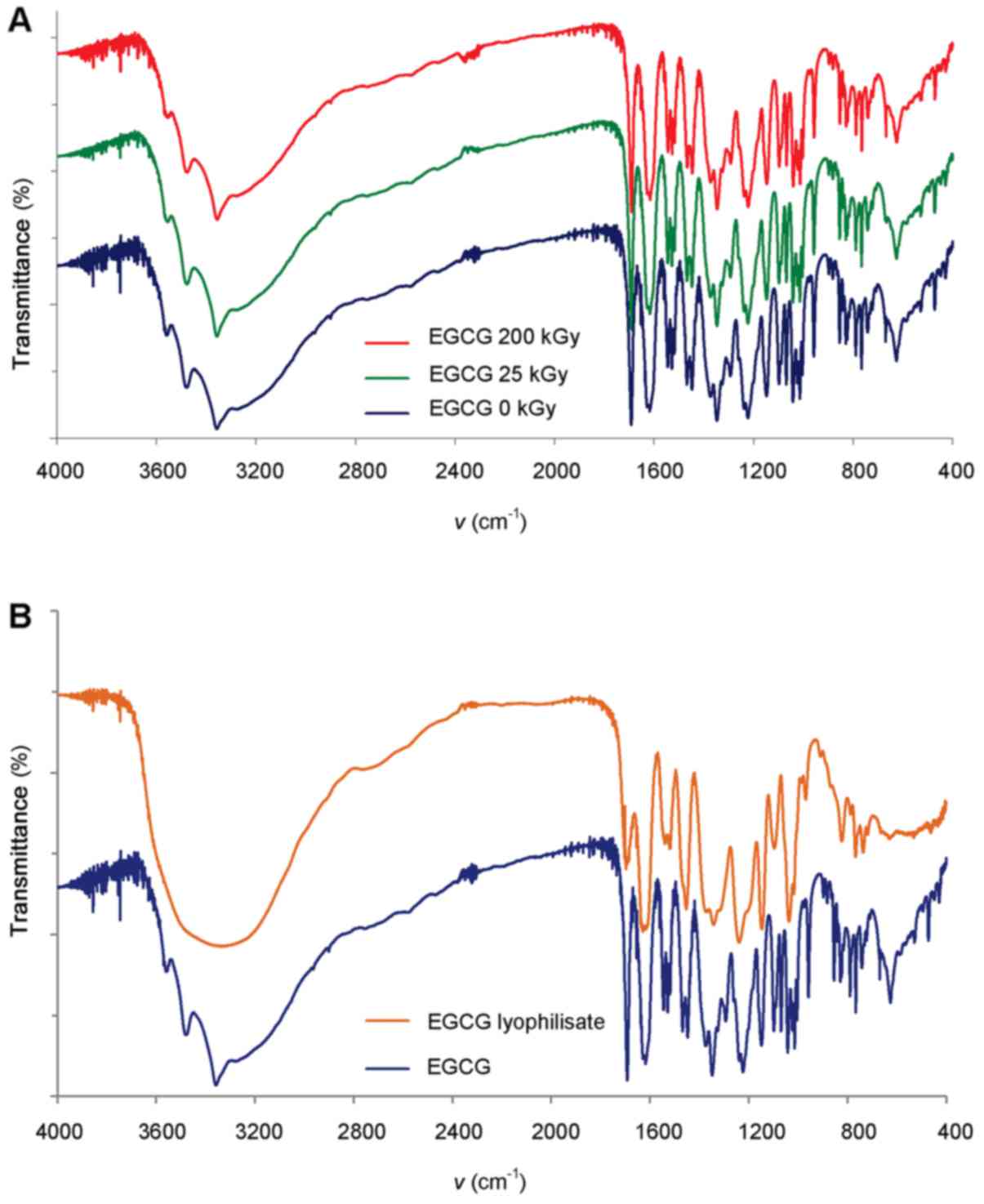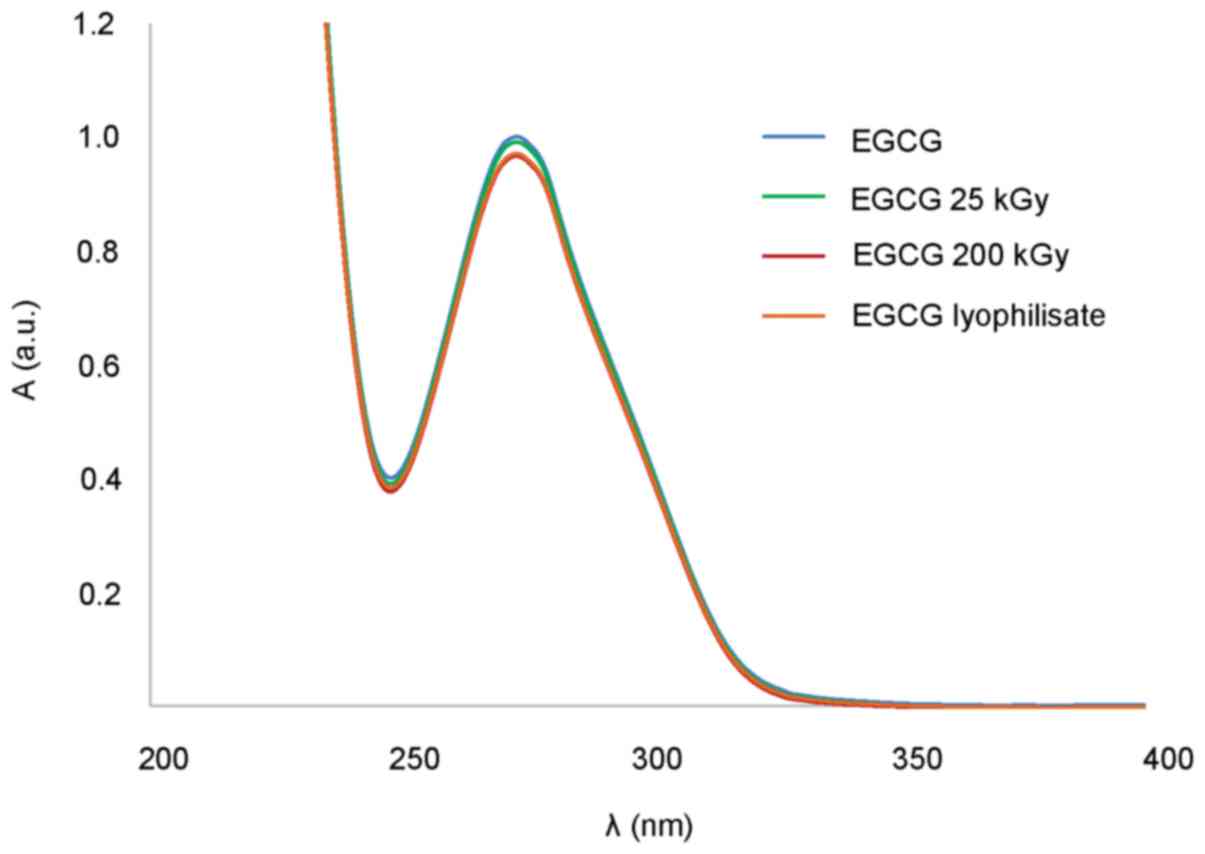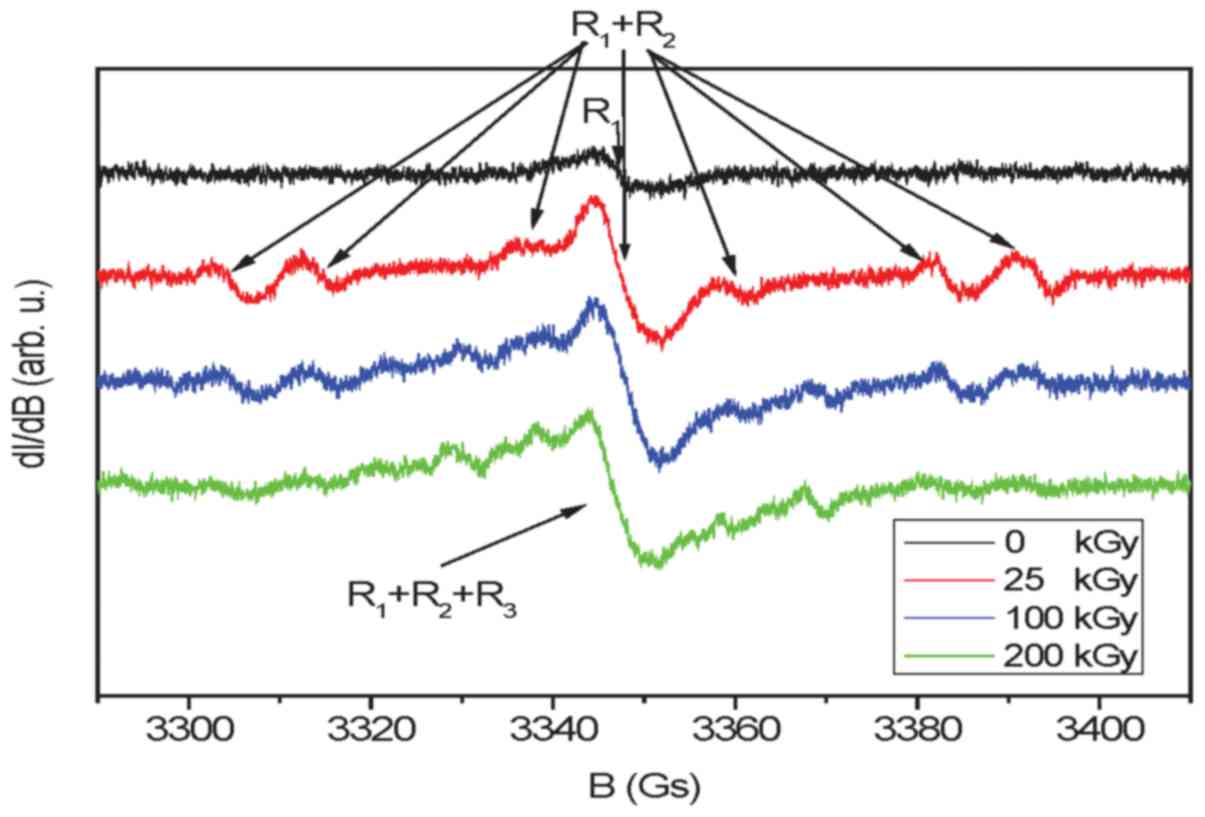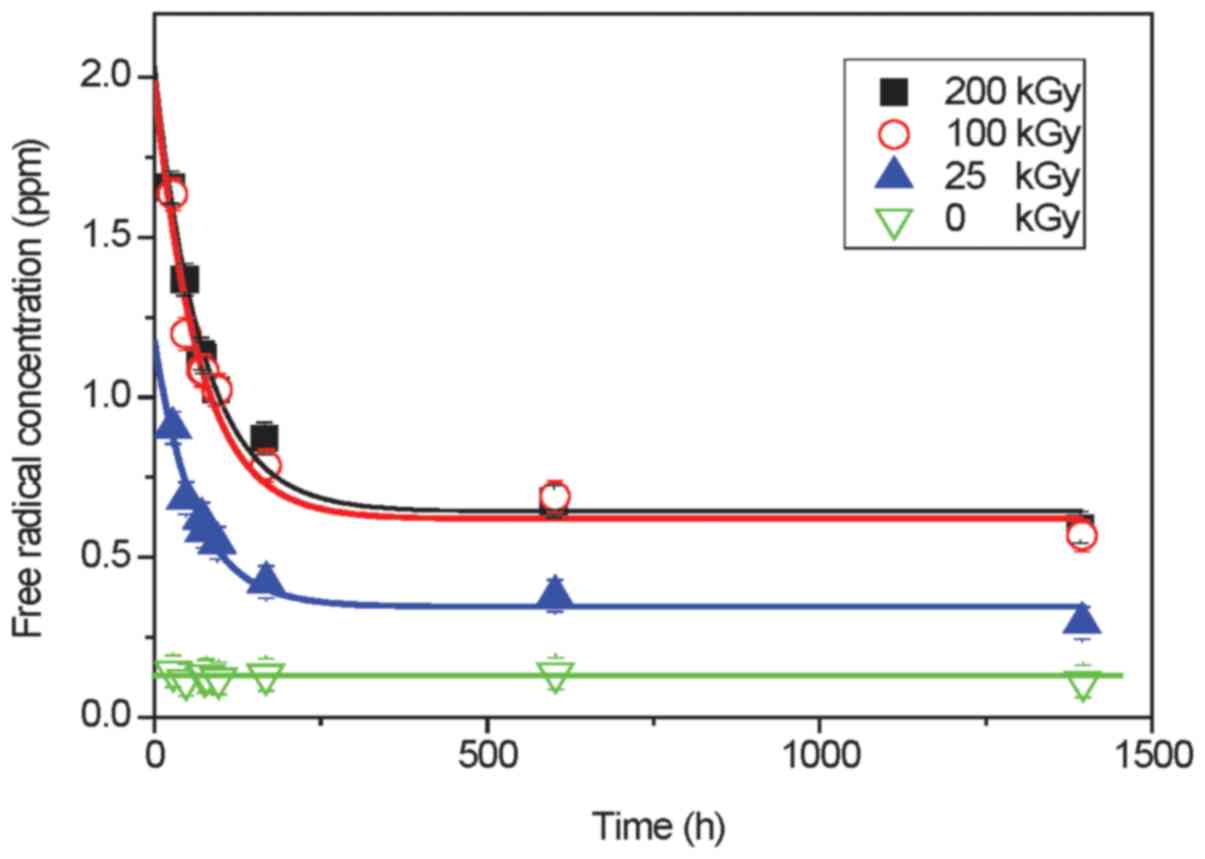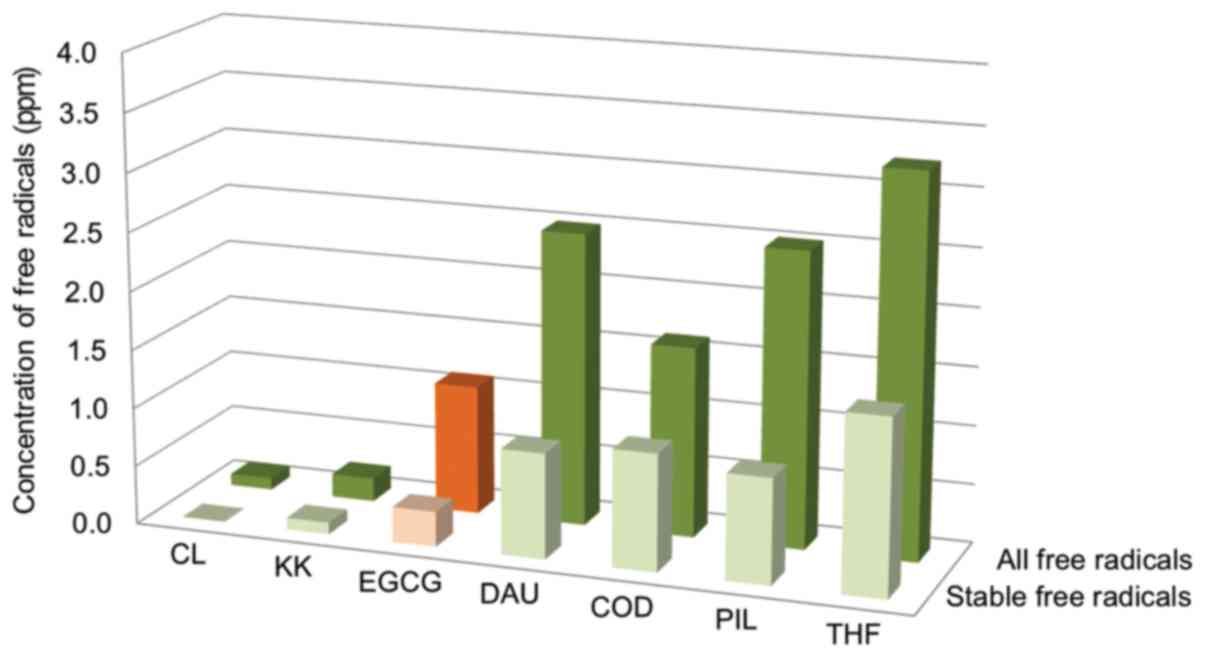|
1
|
Raman JD, Messer J, Sielatycki JA and
Hollenbeak CS: Incidence and survival of patients with carcinoma of
the ureter and renal pelvis in the USA, 1973–2005. BJU Int.
107:1059–1064. 2011. View Article : Google Scholar
|
|
2
|
Madeb R, Golijanin D, Knopf J and Messing
EM: Current state of screening for bladder cancer. Expert Rev
Anticancer Ther. 7:981–987. 2007. View Article : Google Scholar : PubMed/NCBI
|
|
3
|
Shen Z, Shen T, Wientjes MG, O'Donnell MA
and Au JL: Intravesical treatments of bladder cancer: review. Pharm
Res. 25:1500–1510. 2008. View Article : Google Scholar : PubMed/NCBI
|
|
4
|
Pan CW, Shen ZJ and Ding GQ: The effect of
intravesical instillation of antifibrinolytic agents on bacillus
Calmette-Guerin treatment of superficial bladder cancer: a pilot
study. J Urol. 179:1307–1311. 2008. View Article : Google Scholar : PubMed/NCBI
|
|
5
|
Macleod LC, Ngo TC and Gonzalgo ML:
Complications of intra-vesical bacillus calmette-guérin. Can Urol
Assoc J. 8:E540–544. 2014. View Article : Google Scholar : PubMed/NCBI
|
|
6
|
Huang X, Yu HS, Chen Z, Li JL, Hu ZM and
Gao JM: A novel immunotherapy for superficial bladder cancer by the
immobilization of streptavidin-tagged bioactive IL-2 on the
biotinylated mucosal surface of the bladder wall. Chin J Cancer.
29:611–616. 2010. View Article : Google Scholar : PubMed/NCBI
|
|
7
|
Harding GE and Lawlor DK: Ruptured mycotic
abdominal aortic aneurysm secondary to Mycobacterium bovis after
intravesical treatment with bacillus Calmette-Guérin. J Vasc Surg.
46:131–134. 2007. View Article : Google Scholar : PubMed/NCBI
|
|
8
|
Mack D, Höltl W, Bassi P, Brausi M,
Ferrari P, de Balincourt C and Sylvester R; European Organization
for Research and Treatment of Cancer Genitourinary Group: The
ablative effect of quarter dose bacillus Calmette-Guerin on a
papillary marker lesion of the bladder. J Urol. 165:401–403. 2001.
View Article : Google Scholar : PubMed/NCBI
|
|
9
|
Böhle A and Bock PR: Intravesical bacille
Calmette-Guérin versus mitomycin C in superficial bladder cancer:
formal meta-analysis of comparative studies on tumor progression.
Urology. 63:682–686. 2004. View Article : Google Scholar
|
|
10
|
Huncharek M and Kupelnick B:
Chemotherapeutic prophylaxis of superficial bladder tumors.
Oncology (Williston Park). 15:11062001.
|
|
11
|
Jankun J, Keck RW and Selman SH:
Epigallocatechin-3-gallate prevents tumor cell implantation/growth
in an experimental rat bladder tumor model. Int J Oncol.
44:147–152. 2014.
|
|
12
|
Suzuki Y, Miyoshi N and Isemura M:
Health-promoting effects of green tea. Proc Jpn Acad Ser B Phys
Biol Sci. 88:88–101. 2012. View Article : Google Scholar : PubMed/NCBI
|
|
13
|
Saito ST, Gosmann G, Pungartnik C and
Brendel M: Green tea extract-patents and diversity of uses. Recent
Pat Food Nutr Agric. 1:203–215. 2009. View Article : Google Scholar
|
|
14
|
Cooper R, Morré DJ and Morré DM: Medicinal
benefits of green tea: part I. Review of noncancer health benefits.
J Altern Complement Med. 11:521–528. 2005. View Article : Google Scholar : PubMed/NCBI
|
|
15
|
Higdon JV and Frei B: Tea catechins and
polyphenols: health effects, metabolism, and antioxidant functions.
Crit Rev Food Sci Nutr. 43:89–143. 2003. View Article : Google Scholar : PubMed/NCBI
|
|
16
|
Brown MD: Green tea (Camellia sinensis)
extract and its possible role in the prevention of cancer. Altern
Med Rev. 4:360–370. 1999.PubMed/NCBI
|
|
17
|
Jung YD and Ellis LM: Inhibition of tumour
invasion and angio-genesis by epigallocatechin gallate (EGCG), a
major component of green tea. Int J Exp Pathol. 82:309–316. 2001.
View Article : Google Scholar
|
|
18
|
Shirakami Y, Shimizu M and Moriwaki H:
Cancer chemoprevention with green tea catechins: from bench to bed.
Curr Drug Targets. 13:1842–1857. 2012. View Article : Google Scholar : PubMed/NCBI
|
|
19
|
Zhang L, Wei Y and Zhang J: Novel
mechanisms of anticancer activities of green tea component
epigallocatechin-3-gallate. Anticancer Agents Med Chem. 14:779–786.
2014. View Article : Google Scholar
|
|
20
|
Zhu K and Wang W: Green tea polyphenol
EGCG suppresses osteosarcoma cell growth through upregulating
miR-1. Tumour Biol. 37:4373–4382. 2016. View Article : Google Scholar
|
|
21
|
Tran PL, Kim SA, Choi HS, Yoon JH and Ahn
SG: Epigallocatechin-3-gallate suppresses the expression of HSP70
and HSP90 and exhibits anti-tumor activity in vitro and in vivo.
BMC Cancer. 10:2762010. View Article : Google Scholar : PubMed/NCBI
|
|
22
|
Thangapazham RL, Singh AK, Sharma A,
Warren J, Gaddipati JP and Maheshwari RK: Green tea polyphenols and
its constituent epigallocatechin gallate inhibits proliferation of
human breast cancer cells in vitro and in vivo. Cancer Lett.
245:232–241. 2007. View Article : Google Scholar
|
|
23
|
Ahn WS, Huh SW, Bae SM, Lee IP, Lee JM,
Namkoong SE, Kim CK and Sin JI: A major constituent of green tea,
EGCG, inhibits the growth of a human cervical cancer cell line,
CaSki cells, through apoptosis, G(1) arrest, and regulation of gene
expression. DNA Cell Biol. 22:217–224. 2003. View Article : Google Scholar : PubMed/NCBI
|
|
24
|
Tosetti F, Ferrari N, De Flora S and
Albini A: 'Angioprevention': angiogenesis is a common and key
target for cancer chemopreventive agents. FASEB J. 16:2–14. 2002.
View Article : Google Scholar : PubMed/NCBI
|
|
25
|
Singh BN, Shankar S and Srivastava RK:
Green tea catechin, epigallocatechin-3-gallate (EGCG): mechanisms,
perspectives and clinical applications. Biochem Pharmacol.
82:1807–1821. 2011. View Article : Google Scholar : PubMed/NCBI
|
|
26
|
Garbisa S, Sartor L, Biggin S, Salvato B,
Benelli R and Albini A: Tumor gelatinases and invasion inhibited by
the green tea flavanol epigallocatechin-3-gallate. Cancer.
91:822–832. 2001. View Article : Google Scholar : PubMed/NCBI
|
|
27
|
Kobalka AJ, Keck RW and Jankun J:
Synergistic anticancer activity of biologicals from green and black
tea on DU 145 human prostate cancer cells. Cent Eur J Immunol.
40:1–4. 2015.PubMed/NCBI
|
|
28
|
Roomi MW, Ivanov V, Kalinovsky T,
Niedzwiecki A and Rath M: Inhibition of cell invasion and MMP
production by a nutrient mixture in malignant liposarcoma cell line
SW-872. Med Oncol. 24:394–401. 2007. View Article : Google Scholar : PubMed/NCBI
|
|
29
|
Swiercz R, Skrzypczak-Jankun E, Merrell
MM, Selman SH and Jankun J: Angiostatic activity of synthetic
inhibitors of urokinase type plasminogen activator. Oncol Rep.
6:523–526. 1999.PubMed/NCBI
|
|
30
|
Hou Z, Sang S, You H, Lee MJ, Hong J, Chin
KV and Yang CS: Mechanism of action of
(-)-epigallocatechin-3-gallate: auto-oxidation-dependent
inactivation of epidermal growth factor receptor and direct effects
on growth inhibition in human esophageal cancer KYSE 150 cells.
Cancer Res. 65:8049–8056. 2005.PubMed/NCBI
|
|
31
|
Bae MJ, Ishii T, Minoda K, Kawada Y,
Ichikawa T, Mori T, Kamihira M and Nakayama T: Albumin stabilizes
(-)-epigallocatechin gallate in human serum: binding capacity and
antioxidant property. Mol Nutr Food Res. 53:709–715. 2009.
View Article : Google Scholar : PubMed/NCBI
|
|
32
|
Zinellu A, Sotgia S, Scanu B, Forteschi M,
Giordo R, Cossu A, Posadino AM, Carru C and Pintus G: Human serum
albumin increases the stability of green tea catechins in aqueous
physiological conditions. PLoS One. 10:e01346902015. View Article : Google Scholar : PubMed/NCBI
|
|
33
|
Dryden GW, Lam A, Beatty K, Qazzaz HH and
McClain CJ: A pilot study to evaluate the safety and efficacy of an
oral dose of (-)-epigallocatechin-3-gallate-rich polyphenon E in
patients with mild to moderate ulcerative colitis. Inflamm Bowel
Dis. 19:1904–1912. 2013.PubMed/NCBI
|
|
34
|
Lambert JD, Lee MJ, Lu H, Meng X, Hong JJ,
Seril DN, Sturgill MG and Yang CS: Epigallocatechin-3-gallate is
absorbed but extensively glucuronidated following oral
administration to mice. J Nutr. 133:4172–4177. 2003.PubMed/NCBI
|
|
35
|
Scalia S, Marchetti N and Bianchi A:
Comparative evaluation of different co-antioxidants on the
photochemical- and functional-stability of
epigallocatechin-3-gallate in topical creams exposed to simulated
sunlight. Molecules. 18:574–587. 2013. View Article : Google Scholar : PubMed/NCBI
|
|
36
|
Bianchi A, Marchetti N and Scalia S:
Photodegradation of (-)-epigallocatechin-3-gallate in topical cream
formulations and its photostabilization. J Pharm Biomed Anal.
56:692–697. 2011. View Article : Google Scholar : PubMed/NCBI
|
|
37
|
Colomer R, Sarrats A, Lupu R and Puig T:
Natural polyphenols and their synthetic analogs as emerging
anticancer agents. Curr Drug Targets. 18:147–159. 2017. View Article : Google Scholar
|
|
38
|
Joe AK, Schnoll-Sussman F, Bresalier RS,
Abrams JA, Hibshoosh H, Cheung K, Friedman RA, Yang CS, Milne GL,
Liu DD, et al: Phase Ib randomized, double-blinded,
placebo-controlled, dose escalation study of polyphenon E in
patients with Barrett's esophagus. Cancer Prev Res (Phila).
8:1131–1137. 2015. View Article : Google Scholar
|
|
39
|
Kato MT, Leite AL, Hannas AR and Buzalaf
MA: Gels containing MMP inhibitors prevent dental erosion in situ.
J Dent Res. 89:468–472. 2010. View Article : Google Scholar : PubMed/NCBI
|
|
40
|
Stockfleth E and Meyer T: The use of
sinecatechins (polyphenon E) ointment for treatment of external
genital warts. Expert Opin Biol Ther. 12:783–793. 2012. View Article : Google Scholar : PubMed/NCBI
|
|
41
|
Gross G, Meyer KG, Pres H, Thielert C,
Tawfik H and Mescheder A: A randomized, double-blind, four-arm
parallel-group, placebo-controlled phase II/III study to
investigate the clinical efficacy of two galenic formulations of
polyphenon E in the treatment of external genital warts. J Eur Acad
Dermatol Venereol. 21:1404–1412. 2007. View Article : Google Scholar : PubMed/NCBI
|
|
42
|
Kemberling JK, Hampton JA, Keck RW, Gomez
MA and Selman SH: Inhibition of bladder tumor growth by the green
tea derivative epigallocatechin-3-gallate. J Urol. 170:773–776.
2003. View Article : Google Scholar : PubMed/NCBI
|
|
43
|
Selman SH and Keck RW: A comparative study
of the inhibiting effects of mitomycin C and polyphenolic catechins
on tumor cell implantation/growth in a rat bladder tumor model. J
Urol. 186:702–706. 2011. View Article : Google Scholar : PubMed/NCBI
|
|
44
|
Mai VC, Bednarski W, Borowiak-Sobkowiak B,
Wilkaniec B, Samardakiewicz S and Morkunas I: Oxidative stress in
pea seedling leaves in response to Acyrthosiphon pisum infestation.
Phytochemistry. 93:49–62. 2013. View Article : Google Scholar : PubMed/NCBI
|
|
45
|
Mossanen M and Gore JL: The burden of
bladder cancer care: direct and indirect costs. Curr Opin Urol.
24:487–491. 2014. View Article : Google Scholar : PubMed/NCBI
|
|
46
|
Srinivasan H, Allory Y, Sill M, Vordos D,
Alhamdani MS, Radvanyi F, Hoheisel JD and Schröder C: Prediction of
recurrence of non muscle-invasive bladder cancer by means of a
protein signature identified by antibody microarray analyses.
Proteomics. 14:1333–1342. 2014. View Article : Google Scholar : PubMed/NCBI
|
|
47
|
Lohi J, Kyyrönen P, Kauppinen T, Kujala V
and Pukkala E: Occupational exposure to solvents and gasoline and
risk of cancers in the urinary tract among Finnish workers. Am J
Ind Med. 51:668–672. 2008. View Article : Google Scholar : PubMed/NCBI
|
|
48
|
Siemiatycki J, Dewar R, Krewski D, Désy M,
Richardson L and Franco E: Are the apparent effects of cigarette
smoking on lung and bladder cancers due to uncontrolled confounding
by occupational exposures? Epidemiology. 5:57–65. 1994. View Article : Google Scholar : PubMed/NCBI
|
|
49
|
Isharwal S and Konety B: Non-muscle
invasive bladder cancer risk stratification. Indian J Urol.
31:289–296. 2015. View Article : Google Scholar : PubMed/NCBI
|
|
50
|
Mansoor M, Ali S, Fasihuddin Q and Baloch
MU: Superficial bladder tumours: recurrence and progression. J Coll
Physicians Surg Pak. 21:157–160. 2011.PubMed/NCBI
|
|
51
|
Palou-Redorta J, Solsona E, Angulo J,
Fernández JM, Madero R, Unda M, Martínez-Piñeiro JA, Portillo J,
Chantada V and Moyano JL: Retrospective study of various
conservative treatment options with bacilli Calmette-Guérinin
bladder urothelial carcinoma T1G3: maintenance therapy. Actas Urol
Esp. 40:370–377. 2016. View Article : Google Scholar : PubMed/NCBI
|
|
52
|
Iida K, Naiki T, Kawai N, Etani T, Ando R,
Ikegami Y, Okamura T, Kubota H, Okada A, Kohri K, et al: Bacillus
Calmette-Guerin therapy after the second transurethral resection
significantly decreases recurrence in patients with new onset
high-grade T1 bladder cancer. BMC Urol. 16:82016. View Article : Google Scholar : PubMed/NCBI
|
|
53
|
Porten SP, Leapman MS and Greene KL:
Intravesical chemotherapy in non-muscle-invasive bladder cancer.
Indian J Urol. 31:297–303. 2015. View Article : Google Scholar : PubMed/NCBI
|
|
54
|
deKernion JB, Huang MY, Lindner A, Smith
RB and Kaufman JJ: The management of superficial bladder tumors and
carcinoma in situ with intravesical bacillus Calmette-Guerin. J
Urol. 133:598–601. 1985. View Article : Google Scholar : PubMed/NCBI
|
|
55
|
Serretta V: Management, and prevention, of
intravesical therapy complications. Urologia. 76:19–28. 2009.In
Italian. PubMed/NCBI
|
|
56
|
Chopin DK: Intravesical instillation in
the treatment of superficial tumors of the bladder. Prog Urol.
8:268–273. 1998.In French. PubMed/NCBI
|
|
57
|
Llopis M, Moreno J, Botella R and Algado
M: Incrusted cystitis after intravesical mitomycin C treatment.
Acta Urol Belg. 61:21–23. 1993.PubMed/NCBI
|
|
58
|
Punga-Maole ML, Hubert J and Mangin P:
Bladder retraction, a complication of chemoprophylaxis of
superficial bladder cancer using intravesical mitomycin C. Prog
Urol. 5:580–585. 1995.In French. PubMed/NCBI
|
|
59
|
Mereles D and Hunstein W:
Epigallocatechin-3-gallate (EGCG) for clinical trials: more
pitfalls than promises? Int J Mol Sci. 12:5592–5603. 2011.
View Article : Google Scholar : PubMed/NCBI
|
|
60
|
Jankun J, Kondray V and Skrzypczak-Jankun
E: Analysis of the inhibition of PAI-1 by metal the aflavin
complexes and their degradation products. Int J Mol Med.
31:1153–1158. 2013.PubMed/NCBI
|
|
61
|
Zhao H, Zhu W, Xie P, Li H, Zhang X, Sun
X, Yu J and Xing L: A phase I study of concurrent chemotherapy and
thoracic radiotherapy with oral epigallocatechin-3-gallate
protection in patients with locally advanced stage III
non-small-cell lung cancer. Radiother Oncol. 110:132–136. 2014.
View Article : Google Scholar : PubMed/NCBI
|
|
62
|
Shanafelt TD, Call TG, Zent CS, Leis JF,
LaPlant B, Bowen DA, Roos M, Laumann K, Ghosh AK, Lesnick C, et al:
Phase 2 trial of daily, oral polyphenon E in patients with
asymptomatic, Rai stage 0 to II chronic lymphocytic leukemia.
Cancer. 119:363–370. 2013. View Article : Google Scholar
|
|
63
|
Chen Z, Zhu QY, Tsang D and Huang Y:
Degradation of green tea catechins in tea drinks. J Agric Food
Chem. 49:477–482. 2001. View Article : Google Scholar : PubMed/NCBI
|
|
64
|
Lee SM, Kim CW, Kim JK, Shin HJ and Baik
JH: GCG-rich tea catechins are effective in lowering cholesterol
and triglyceride concentrations in hyperlipidemic rats. Lipids.
43:419–429. 2008. View Article : Google Scholar : PubMed/NCBI
|
|
65
|
Council of Europe: European Pharmacopoeia.
8th edition. Strasbourg, France: 2014
|
|
66
|
The United States Pharmacopeial Convention
(USP): The United States Pharmacopoeia 39 - National Formulary 34
(USP 39-NF 34). USP; Rockville, MD: 2015
|
|
67
|
Marciniec B and Dettlaff K: Radiation
sterilization of drugs. Trends in Radiation Sterilization of Health
Care Products. IAEA; Vienna, Austria: pp. 187–230. 2008
|
|
68
|
Marciniec B, Kozak M, Wachowski L and
Ogrodowczyk M: Evaluation of radiostability of some steroid
derivatives. J Therm Anal Calorim. 73:473–485. 2003. View Article : Google Scholar
|
|
69
|
Marciniec B, Kozak M and Dettlaff K:
Thermal analysis in evaluation of the radiochemical stability of
some fungicidal drugs. J Therm Anal Calorim. 77:305–317. 2004.
View Article : Google Scholar
|
|
70
|
Marciniec B, Dettlaff K, Danikiewicz W,
Spólnik G, Jaroszkiewicz E and Naskrent M: Radiostability of
ketoconazole in the solid state. Curr Pharm Anal. 9:102–113.
2013.
|
|
71
|
Marciniec B, Dettlaff K and Naskrent M:
Influence of ionizing irradiation on clotrimazole in the solid
state. J Pharm Biomed Anal. 50:675–678. 2009. View Article : Google Scholar
|
|
72
|
Marciniec B, Kozak M, Naskrent M, Hofman
M, Dettlaff K and Stawny M: DSC and EPR analysis of some radiation
sterilized alkaloids. J Therm Anal. 102:261–267. 2010. View Article : Google Scholar
|
|
73
|
Marciniec B, Stawny M, Kozak M and
Naskrent M: The influence of radiation sterilization on
thiamphenicol. Spectrochim Acta A Mol Biomol Spectrosc. 69:865–870.
2008. View Article : Google Scholar
|
|
74
|
Paszel-Jaworska A, Totoń E, Dettlaff K,
Kaczmarek A, Bednarski W, Oszczapowicz I, Jelińska A and Rybczyńska
M: Increased proapoptotic activity of electron beam irradiated
doxorubicin and epirubicin in multidrug-resistant human leukemic
cells. Chem Biol Interact. 258:69–78. 2016. View Article : Google Scholar : PubMed/NCBI
|



